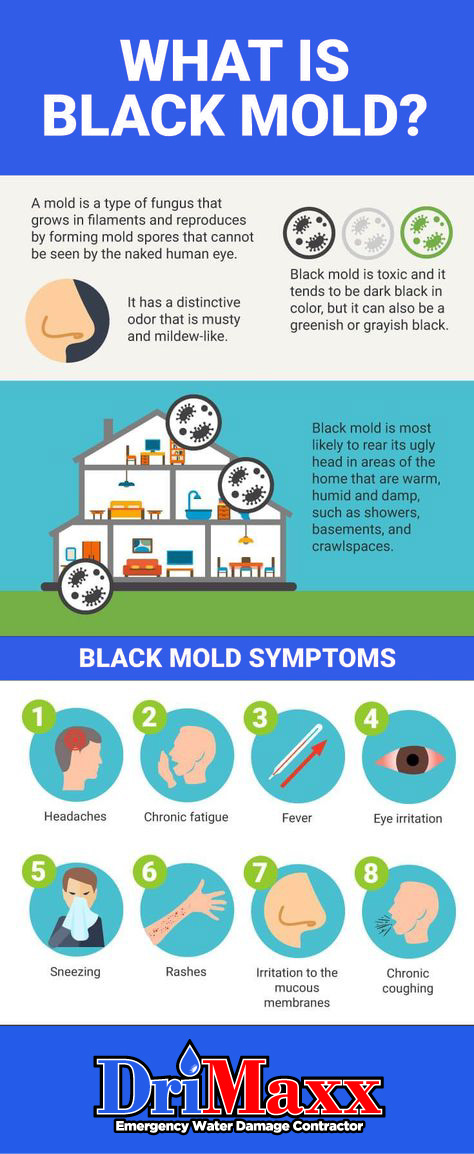Cladosporium is most commonly identified as an outdoor fungus, with high spore count in the summer months. Indoors, it’s usually found on in the fiberglass liner inside air ducts. Its indoor food sources include food, paint and textiles.
Penicillium is most commonly found in carpet, wallpaper and interior fiberglass duct insulation. It’s a relatively wide mold classification. Some species can produce toxins.
Aspergillus is considered to be wholly allergenic and may be parasitic. Depending on the fungus’ food source, some species may produce toxins that may or may not be considered potential human carcinogens.
Strachybotrys Chartarum (commonly known as “black mold”), is the most deadly form of mold, but is relatively rare. Chiefly an indoor fungus, it is dark-colored (usually greenish-black) and slow-growing, but poisonous when inhaled. Even dead spores are allergenic and toxigenic.

